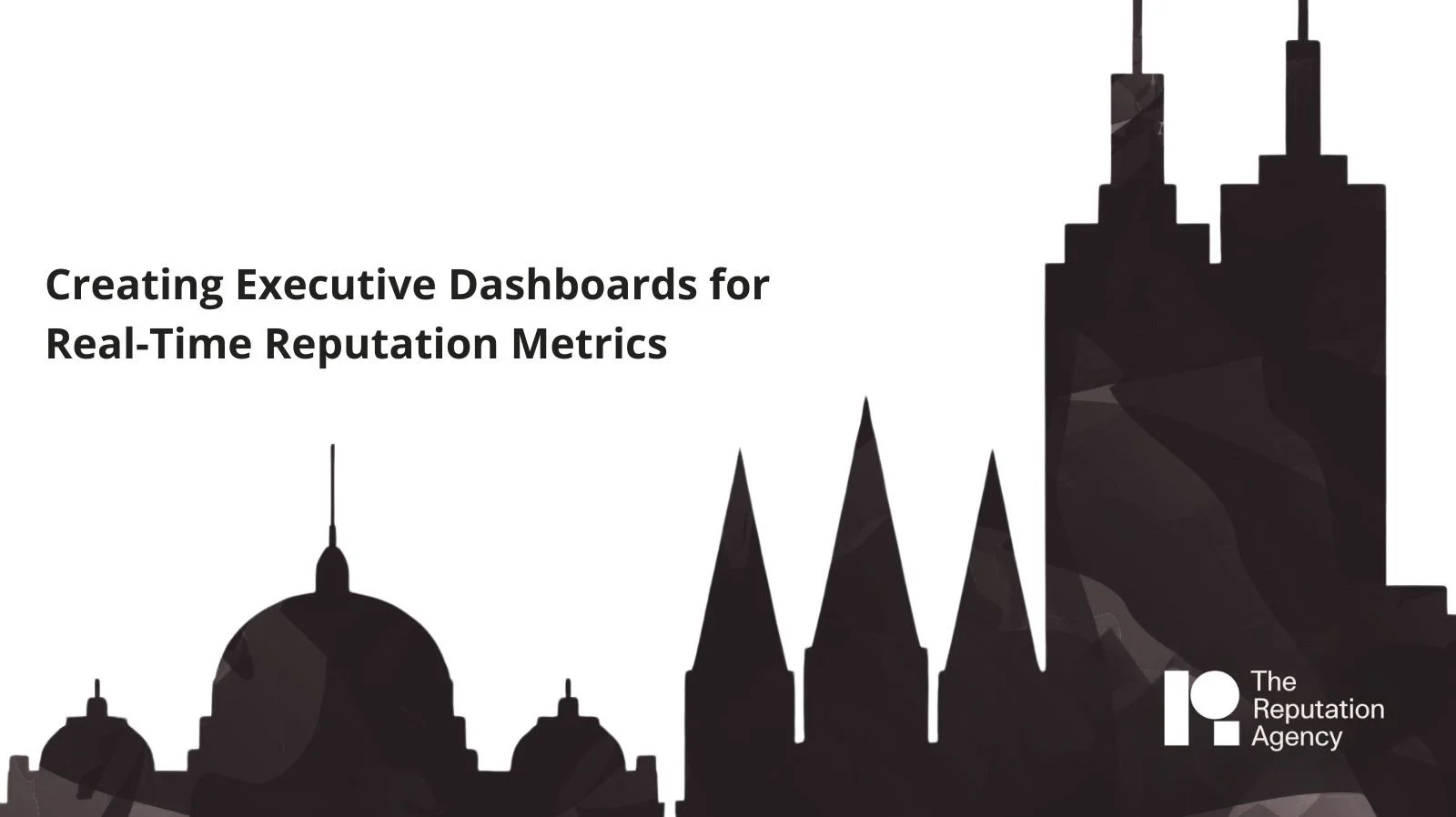Creating Executive Dashboards for Real-Time Reputation Metrics
Why Executive Dashboards Are Essential for Reputation Management
In today’s fast-paced business environment, an organisation’s reputation can change rapidly due to media coverage, social media activity, or stakeholder sentiment. Executive dashboards that track real-time reputation metrics provide leaders with actionable insights, enabling timely decisions to protect and enhance the company’s reputation. These dashboards allow executives to monitor trends, spot risks early, and respond proactively to challenges.
The Role of Real-Time Metrics in Reputation Management
Monitoring Key Reputation Indicators
Executive dashboards consolidate multiple data streams to track key indicators, including:
Media coverage: Positive, neutral, and negative press mentions
Social media sentiment: Engagement trends, mentions, and trending topics
Customer feedback: Reviews, complaints, and surveys
Industry benchmarks: Comparing your reputation against competitors
By centralising these metrics, executives gain a holistic view of the organisation’s reputation at any given moment.
Enabling Proactive Decision-Making
Real-time dashboards allow leaders to detect emerging risks before they escalate. Quick access to insights helps executives:
Respond promptly to negative media or social media mentions
Adjust communications strategies in real time
Identify opportunities to highlight positive stories or initiatives
Proactive decision-making ensures the organisation maintains credibility and trust among stakeholders.
Steps to Create Executive Dashboards for Reputation Metrics
1. Define Your Key Metrics
Identify which reputation metrics are most relevant to your organisation. Consider:
Brand sentiment: Overall perception in media and social channels
Media reach and impressions: How widely coverage is being seen
Customer engagement and feedback: Volume and sentiment of reviews or surveys
Stakeholder influence: Mentions by key partners, investors, or public figures
Clearly defined metrics ensure the dashboard delivers actionable insights.
2. Integrate Data Sources
Combine data from multiple sources for a comprehensive view:
Media monitoring platforms for press coverage
Social listening tools for social media insights
CRM systems for customer feedback and engagement
Internal reporting tools for performance indicators
Integration ensures executives have a single source of truth for reputation insights.
3. Visualise Data Effectively
Dashboards should present data in a clear and intuitive format. Use:
Graphs and charts to track trends over time
Heat maps or scorecards for quick risk assessment
Alerts and notifications to flag significant changes in sentiment
Effective visualisation allows executives to quickly grasp the organisation’s reputation landscape.
4. Implement Real-Time Updates
Ensure the dashboard updates in real time or near real time to capture evolving situations. Automated feeds from social media, news outlets, and internal reporting systems keep executives informed and ready to act when necessary.
5. Enable Drill-Down Capabilities
Executives should be able to drill down into specific data points for context. For example:
Clicking on a negative media mention to read the full article
Reviewing social media sentiment by platform or influencer
Analysing customer feedback by region or product line
Drill-down capabilities provide deeper insights to inform strategic decisions.
6. Review and Refine Dashboard Design
Regularly review dashboard performance to ensure it remains aligned with executive needs. Gather feedback from users and adjust:
Metrics tracked
Visualisation types
Alert thresholds
Continuous refinement ensures the dashboard remains a powerful tool for reputation management.
Did You Know?
Companies that use real-time reputation dashboards can respond to potential crises 60% faster than those relying on traditional reporting methods.
Driving Better Decisions with Real-Time Reputation Insights
Executive dashboards offer leaders a real-time window into how stakeholders perceive their organisation. By tracking relevant metrics, visualising trends, and enabling proactive responses, executives can protect and enhance their company’s reputation while making informed strategic decisions.
Need Help Building Reputation Dashboards?
The Reputation Agency helps organisations design executive dashboards that track real-time reputation metrics and provide actionable insights. Explore how our Reputation Value Index system can design a dashboard that can help you strengthen your brand and make data-driven decisions.
FAQs
1. Why are executive dashboards important for reputation management?
They provide real-time insights into media, social, and stakeholder sentiment, enabling proactive and informed decision-making.
2. What key metrics should be tracked on a reputation dashboard?
Metrics include media coverage sentiment, social media engagement, customer feedback, and stakeholder mentions or influence.
3. How can data be visualised effectively for executives?
Use charts, graphs, heat maps, scorecards, and alert systems to highlight trends and quickly communicate key insights.
4. Why is real-time updating critical for reputation dashboards?
Real-time updates allow executives to respond promptly to emerging risks, ensuring timely crisis management and opportunity leverage.
5. Can executives drill down into dashboard data?
Yes, drill-down capabilities provide context and deeper insights, allowing leaders to examine specific mentions, feedback, or sentiment trends for better decision-making.

